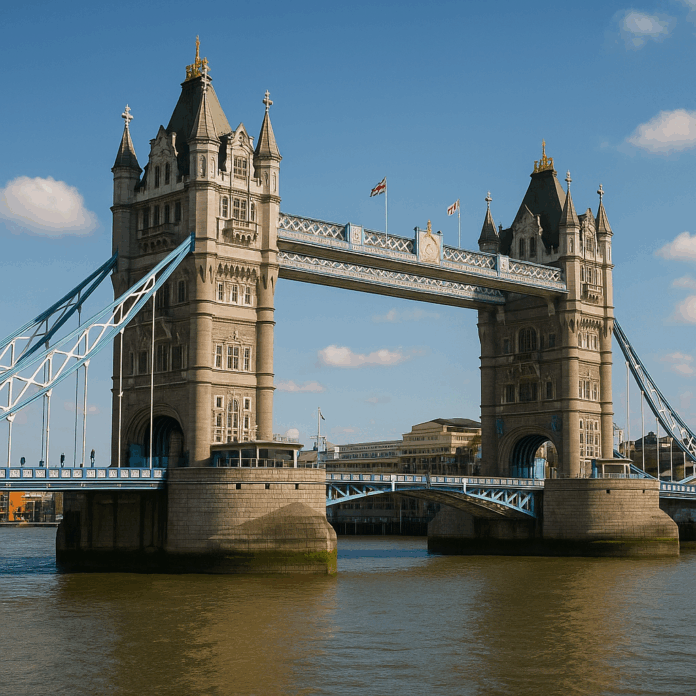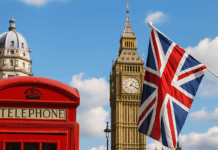Have you ever crossed London Bridge and wondered what secrets lie beneath its modern surface? From gruesome tales of human sacrifice to heads on spikes, this iconic bridge is more than just a crossing—it’s a historical hotspot filled with dark stories and bizarre happenings. In this insider guide, we’ll take you on a journey through the eerie, fascinating, and sometimes macabre history of London Bridge, unraveling the mysteries that have shaped its legacy. Ready to uncover the truth behind the bridge you thought you knew?
From chilling folklore and horrific public displays to tales of the bridge being shipped across the ocean, London Bridge holds more than its fair share of surprises. Whether you’re planning to visit or simply love a good history lesson, join us as we reveal the stories that lurk beneath the surface of one of the world’s most famous landmarks.
The Chilling Legend of Child Sacrifices and That Nursery Rhyme
Remember singing “London Bridge Is Falling Down” as a kid? Turns out, it might not be as innocent as it sounds. Folklore ties the rhyme to ancient practices of human sacrifice to keep the bridge standing. Here’s the deal: Some historians believe it hints at “immurement,” where people—often children—were buried alive in foundations to please river gods.
- How the theory works: In medieval times, builders supposedly encased victims in walls or pillars for “stability.” It’s unproven for London Bridge, but the idea persists in old tales.
- What the digs revealed: Back in 2007, during excavations for the London Dungeon (a spot you should visit for immersive history), workers found bodies under the foundations. No clear proof of sacrifice, though—could just be old burials. If you’re curious, head to the Dungeon yourself; tickets are easy to grab online, and it’s a fun way to visualize these stories.
Want to dig deeper? Search local archives or join a guided ghost tour in Southwark—they often cover this legend and show you where the old bridge stood.
Heads on Spikes: A Gruesome Warning for Centuries
Picture this: You’re entering London in the 1300s, and the first thing you see is a row of severed heads on pikes. From the 14th to 17th centuries, the southern gatehouse turned London Bridge into a public horror show. It was all about deterrence—traitors’ heads were boiled, tarred, and displayed to scare off rebels.
- The process explained: Heads got preserved with tar to last longer in the weather. An official “Keeper of the Heads” even had the job of rotating and maintaining them. Talk about a niche career.
- Famous faces up there: Think William Wallace (the Braveheart guy) in 1305, rebel leader Jack Cade in 1450, and Thomas More in 1535. These weren’t just nobodies; they were big names in British history.
If you’re planning a trip, walk the modern bridge and imagine the gatehouse—it’s gone now, but plaques nearby mark the spot. Pro tip: Download a history app like Historic England for augmented reality views of what it looked like.
The Bridge That Got Shipped to America (Yes, Really)
Fast-forward to the 1960s: The old Victorian London Bridge was sinking under traffic weight. Instead of scrapping it, officials sold it off. American tycoon Robert P. McCulloch snapped it up for $2.4 million in 1968 and rebuilt it stone by stone in Arizona.
- Step-by-step relocation: Each piece was numbered, shipped across the Atlantic, and reassembled over Lake Havasu. It’s now a quirky tourist draw—complete with fake British pubs around it.
- Record-breaking fun fact: This move landed it in the Guinness Book as the “largest antique ever sold.” Who knew bridges could be antiques? These fun facts make the London Bridge even more fascinating.
Curious to see it? If you’re stateside, road-trip to Lake Havasu City. Back in the UK, visit the Monument to the Great Fire nearby for more bridge lore—it’s a short Tube ride away.
When London Bridge Was a Full-On Town
The medieval London Bridge wasn’t just a crossing; it was a bustling mini-city. Built in 1209, it had houses, shops, and even a chapel packed onto it, creating a chaotic vibe.
- Daily life breakdown: Imagine squeezing through a tunnel of buildings—crossing could take an hour on busy days. The chapel honored St. Thomas Becket, adding a spiritual twist.
- Prefab pioneer: In 1579, the Nonsuch House arrived from the Netherlands in numbered parts, making it one of the first prefab buildings ever. Assembly was like a giant puzzle.
To experience a taste of this, stroll Borough Market south of the bridge—it’s got that same lively, crowded energy from back then. Grab a coffee and people-watch; it’s the best way to feel the history.
Quirky Rules and Mishaps: From Left-Hand Driving to Ship Crashes
London Bridge’s chaos led to some odd traditions that stick around today. Traffic was so wild that a “keep left” rule emerged, influencing all of UK driving.
- How it started: With buildings narrowing the path, drivers had to pass on the left to avoid collisions. This became law and shaped British roads.
- A modern blunder: In 1984, the HMS Jupiter frigate rammed the bridge by accident, denting both. No heads rolled (pun intended), but it was a pricey fix.
If you’re driving in London, remember this origin story next time you stick to the left. Or, for safety, take the Underground—London Bridge station is right there, with easy connections.
There you have it—the mysterious underbelly of London Bridge, from dark legends to transatlantic adventures. These stories show how history layers up in unexpected ways. Next time you’re near the Thames, pause and think about the spikes and sacrifices. Got a favorite fact? Or planning a visit? Let me know—exploring these spots is half the fun. If you want more on UK landmarks or how to trace these tales yourself, just ask!
Final Words:
London Bridge’s history is a curious mix of the haunting, the bizarre, and the downright strange. As you wander across its modern span, take a moment to imagine the centuries of secrets hidden within. Whether it’s the ancient practice of human sacrifice or the gruesome public displays of traitor’s heads, the bridge’s past is a darkly fascinating tale. And if you’re up for it, there’s still plenty of history waiting to be explored—from ghost tours to museum exhibits.
So, next time you find yourself crossing the Thames, remember: the bridge beneath your feet has lived through centuries of stories that are anything but ordinary. The past isn’t just behind you; it’s all around you, waiting to be discovered.


























